Callogaeana festiva festiva is a cicada found in China, Thailand, India, Laos, Malaysia, Indochina, Bhutan, and likely adjacent countries. They are part of a group of cicadas known as “butterfly cicadas” because of their colorful wings.
Photo of a Callogaeana festiva festiva (orange) by Michel Chantraine:
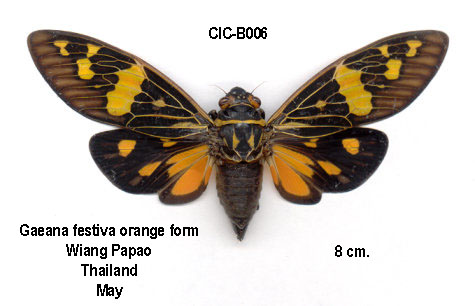
Callogaeana festiva festiva (white) by Michel Chantraine:
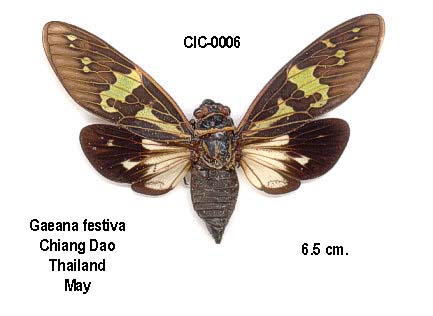
Photos by Dan Mozgai:
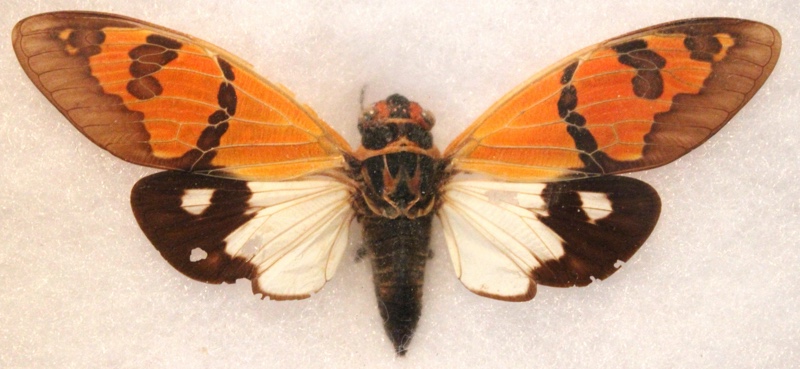
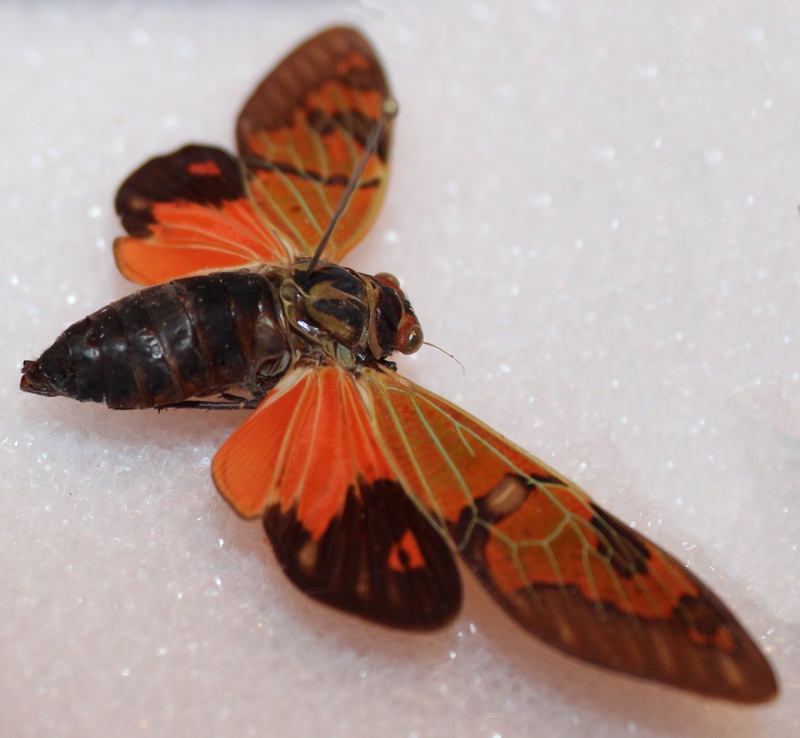
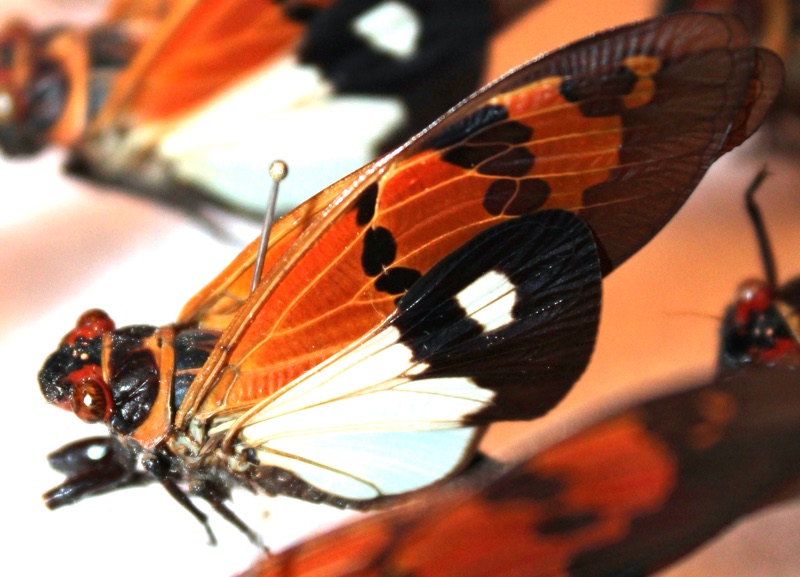
Scientific classification:
Family: Cicadidae
Subfamily: Cicadinae
Tribe: Gaeanini
SubTribe: Gaeanina
Genus: Callogaeana
Species: Callogaeana festiva festiva (Fabricius, 1803)
Note: there is another sub-species of Callogaeana festiva, but it is not named.
Here is a description of this cicada from A Monograph of Oriental Cicadas by W. L. Distant. 1889-1892. Read it on the Biodiversity Heritage Library website.
Male: Body above black; ocelli, eyes and a broad fascia behind them reddish-ochraceous; margins of pronotum and four discal fasciae to mesonotum— of which the two central ones are angulated and connected with the anterior angle at the basal cruciform elevation — greenish-ochraceous. Body beneath and legs lack; apical half of face and a spot between face and eyes reddish-ochraceous.
Tegmina greenish-ochraceous; the radial area, a transverse fascia crossing center from the apex of the radial area, near which is a large triangular spot, apex, and outer and inner margins, and two small spots near the base, blackish. The black area at the apex is more or less broken, sometimes including a small greenish-ochraceous spot. Wings pale bluish-green; the apex broadly black — containing a pale bluish spot — and the margin continued more narrowly black to anal angle.
The face is coarsely transversely striate, and broadly sulcated at the base.
For more information about this cicada, visit Cicadas of India.
A nice comparison of Gaeana & Callogaeana:
Gaeanaã¨Callogaeanaã®é•ã„ã¯ã€èµ¤ç·šã§å›²ã£ãŸç¿…室ã®å¤§ãã•ã«é¡•è‘—(ä¸é€”åŠç«¯ãªè¦‹åˆ†ã‘æ–¹ã ã‘ã©)。
Callogaeanaã®ã»ã†ãŒé•·ãã€ç‰¹ã«ä¸‹ã®ç¿…室ãŒåˆ†ã‹ã‚Šã‚„ã™ã„ pic.twitter.com/xfW2XVAKQE— ã¯ã£ã½ãƒ¼ã•ã„ (@musinomushi) May 16, 2021


